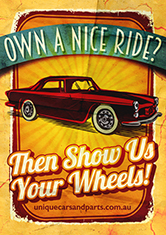|
|
Garishness lost its glitter in the 'Sixties. In America, this was reflected in sober car design. Once again life style took on a new definition. It was the prelude to the Nineteen Seventies and a decade of fast living and radical changes. American Motors Corporation (or AMC) was created at the merger between Hudson and Nash-Kelvinator, and at the time it was the largest merger ever in the United States (1954). Ramblers were the first to start the compact car movement way before there was a need, twenty years before the fuel crisis strangled the US economy and killed a lot of great cars.
Then, in a surprising move that has not one single time since been as successful – they reintroduced the 1955 Nash Rambler without any major modifications in 1958 with huge success. It was during the 1960s that AMC changed their ideals and began to build more reliable and economy based cars that were easier to afford and lasted the owners a good amount of times, they also started doing more convertibles and included air-conditioning as standard in 1968.
Because of this AMC were able to become very successful in marketing a new feature, and then with a new CEO in 1968 they changed more of AMCs marketing and eventually were able to regain some lost ground in the earlier sixties. Finally they were able to reach the VW bug in price, and sell as cheaply as they did – which further expanded the numbers they sold. However, in 1969 they decided the time for the Rambler was gone –and they cut that… but being the first to make Air Conditioning standard – they showed it could be done with minimal cost.
At the beginning of the 1970s AMC were seeing more sales, more market share, and beginning to reap the benefits from the expanded lines and expansion of their sales. However, by the end of the 1970s a lack of development (mainly due to prototype failure) lead them to stagnant sales, and they were unable to compete in the energy crisis. In 1979 they merged with Renault to get some more backing and car models, and that worked until 1985, then the final buyout occurred. From that point on, AMC were merely a subsidiary of Chrysler, although the latter brought with them the knowledge of constant need for innovation and designing.
Also see: The American Muscle Car Era - 1960 | 1960 American Car Ads |
 |
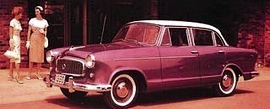 |
 |
AMC Rambler American |
| |
Also see: AMC Road Tests and Reviews | AMC Brochures |
| |
In 1960, AMC added a four-door sedan and a third trim level, a top-of-the line Custom to the Rambler range. The new four-door was meant to battle the newly introduced compacts from the Big Three, the Ford Falcon, Chevrolet Corvair, and Plymouth Valiant. The new Custom came standard with a new 195.6 cu in 3.2 litre overhead valve 195.6 cu in 3.2 litre engine featuring 125 hp (93 kW). |
|
 |
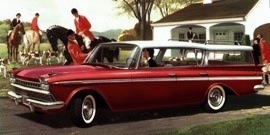 |
 |
AMC Rambler Ambassador Wagon |
| |
Also see: AMC Road Tests and Reviews | AMC Brochures |
| |
Even in the face of the new competition from much larger automakers, the compact Rambler American sedans and wagons enjoyed appeal not only because of their low initial price, economy and high gas mileage, but also because their resale values ranked among the highest. Demand for the traditional American continued to grow as sales increased to 120,603 units, thus helping AMC reach 7.5 percent of the U.S. market with a total Rambler sales of 485,745 automobiles and third place among domestic brands. |
|
 |
 |
 |
Buick Invicta Convertible |
| |
Also see: Buick Road Tests and Reviews | Buick Brochures |
| |
The Invicta was a continuation of the Buick Century concept that mated the standard size Buick LeSabre (pre-1959, Buick Special) body with Buick's larger 401 in³ Nailhead V8 engine, yielding what was referred to as "the banker's hot rod." The name was derived from Latin and signified 'unconquerable, invincible, unbeatable' according to Buick Motor Division sales training materials. |
|
 |
 |
 |
Buick Invicta Hardtop Coupe |
| |
Also see: Buick Road Tests and Reviews | Buick Brochures |
| |
The Invicta series was introduced as a full line of body styles for model year 1959. Sales never approached that of either the LeSabre or Electra models, but were consistent with the traditional sales penetration of Buick's sporty mid-priced models (the 1954 to 1958 Century and 1963 to 1970 Wildcat). Starting in 1960, an Invicta Custom trim package was offered, featuring bucket seats and a 'consolette' in the hardtop coupe, convertible and wagon and a leather bench seat with a centre armrest on some 4 door hardtops. Sales were average. |
|
 |
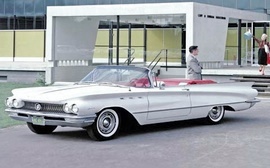 |
|
 |
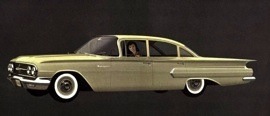 |
 |
Chevrolet Biscayne Fleetmaster |
| |
Also see: Chevrolet Road Tests and Reviews | Chevrolet Brochures |
| |
In 1960, a lower-priced, sparsely trimmed version of the Biscayne called the Fleetmaster was produced. Aimed primarily at the fleet market, the Fleetmaster included a lower grade of upholstery than the standard Biscayne and deleted routine convenience items such as a cigarette lighter, door armrests, and passenger-side sun visor. In addition, many parts were painted rather than chrome plated. Both two- and four-door sedans were available. A number of economy-minded options were available exclusive to the Fleetmaster model, although the performance-oriented engines and transmissions were also available (for police applications or performance-oriented customers who wanted the lightest car possible). The Fleetmaster was dropped after 1961. |
|
 |
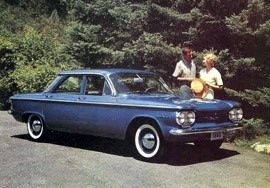 |
|
 |
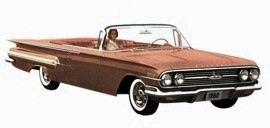 |
 |
Chevrolet Impala Convertible |
| |
Also see: Chevrolet Road Tests and Reviews | Chevrolet Brochures |
| |
For 1960, the Impala's styling was revised with more conventional styling with the trademark triple tailights reinstated, and would remain consecutivley through 1985. It became the best-selling automobile in the United States and held that position for the next decade. |
|
 |
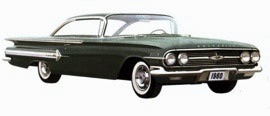 |
|
 |
 |
|
 |
 |
|
 |
 |
 |
Chrysler Saratoga |
| |
Also see: Chrysler Road Tests and Reviews | Chrysler Brochures |
| |
For 1960 the Chrysler Saratoga was in its final year, and was based wholly on the New Yorker body shell, less New Yorker trimmings, and again offered in three body styles – four-door sedan, four-door hardtop, and two-door hardtop coupe. |
|
 |
 |
|
 |
 |
 |
DeSoto Diplomat Club Sedan and Station Wagon |
| |
Also see: DeSoto Brochures |
| |
The 1960 Diplomat models had the same integrated body, but different styling. The fins were certainly less pronounced. Diplomat continued to offer a Dodge-based station wagon in 1960, even thought that bodystyle had been cancelled in the US DeSoto line. |
|
 |
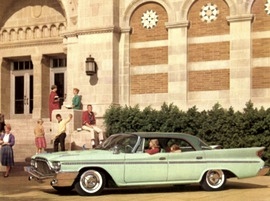 |
|
 |
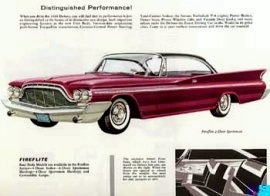 |
|
 |
 |
|
 |
 |
|
 |
 |
|
 |
 |
|
 |
 |
|
 |
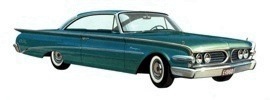 |
|
 |
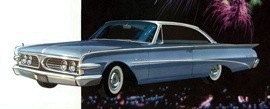 |
|
 |
 |
|
 |
 |
|
 |
 |
|
 |
 |
|
 |
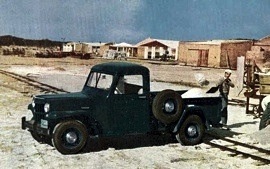 |
|
 |
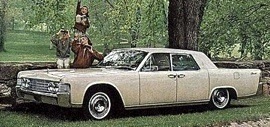 |
|
 |
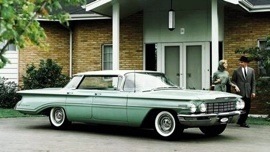 |
|
 |
 |
|
 |
 |
|
|

1960 AMC Military Jeep - Mighty Mite. |
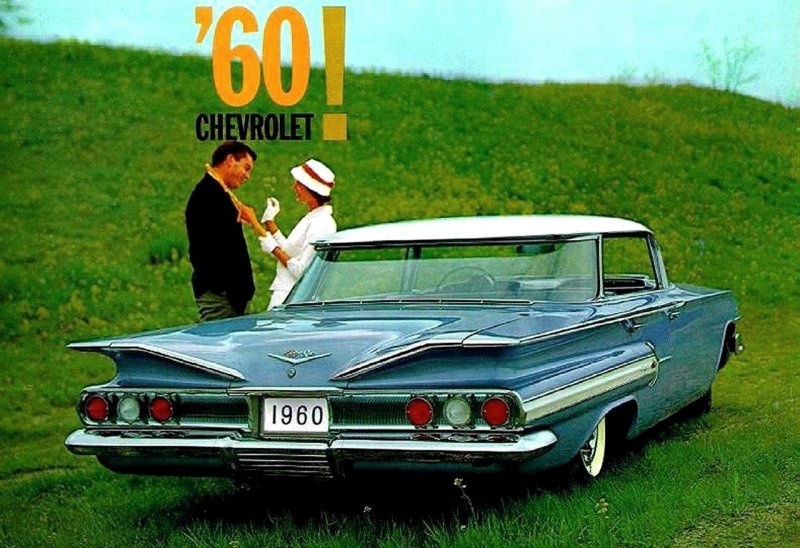
1960 Chevrolet. |
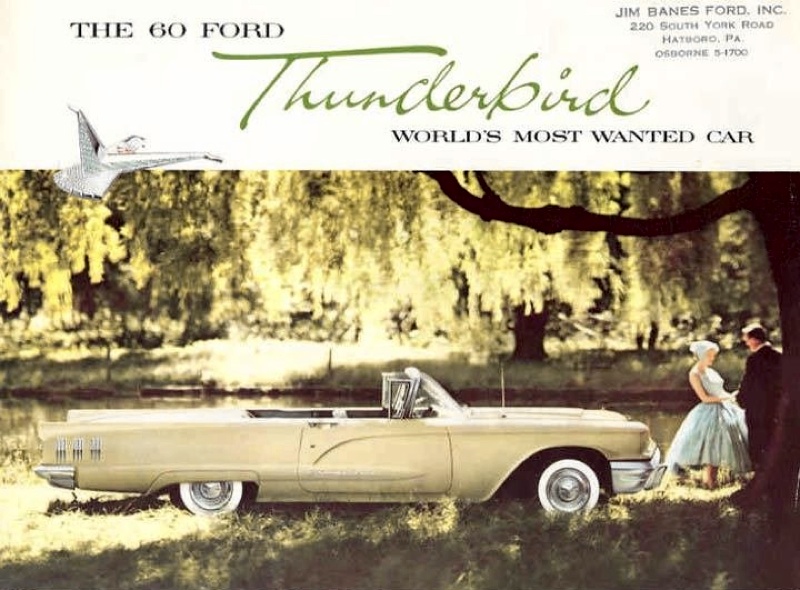
1960 Ford Thunderbird. |
|
| Sell Your Car or Parts Browse the Classifieds It's Absolutely Free! - Find Out More |


